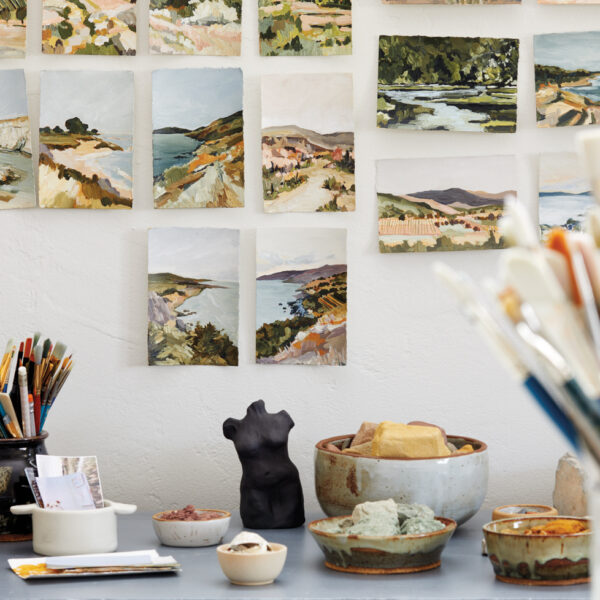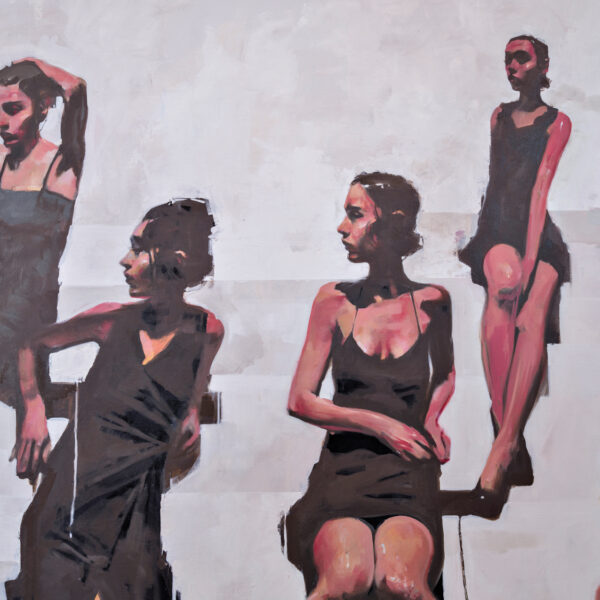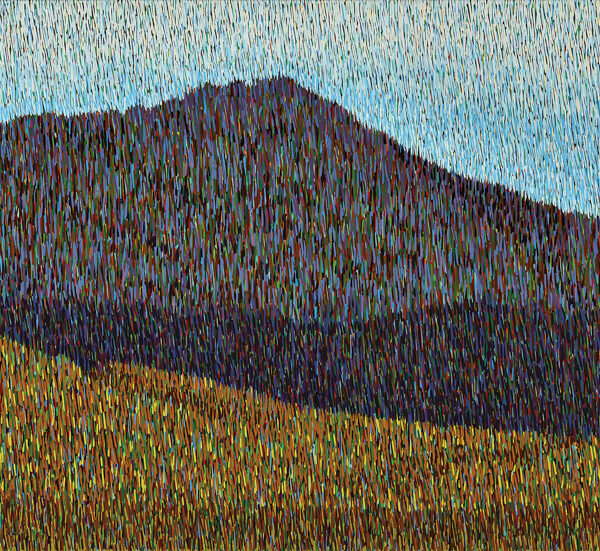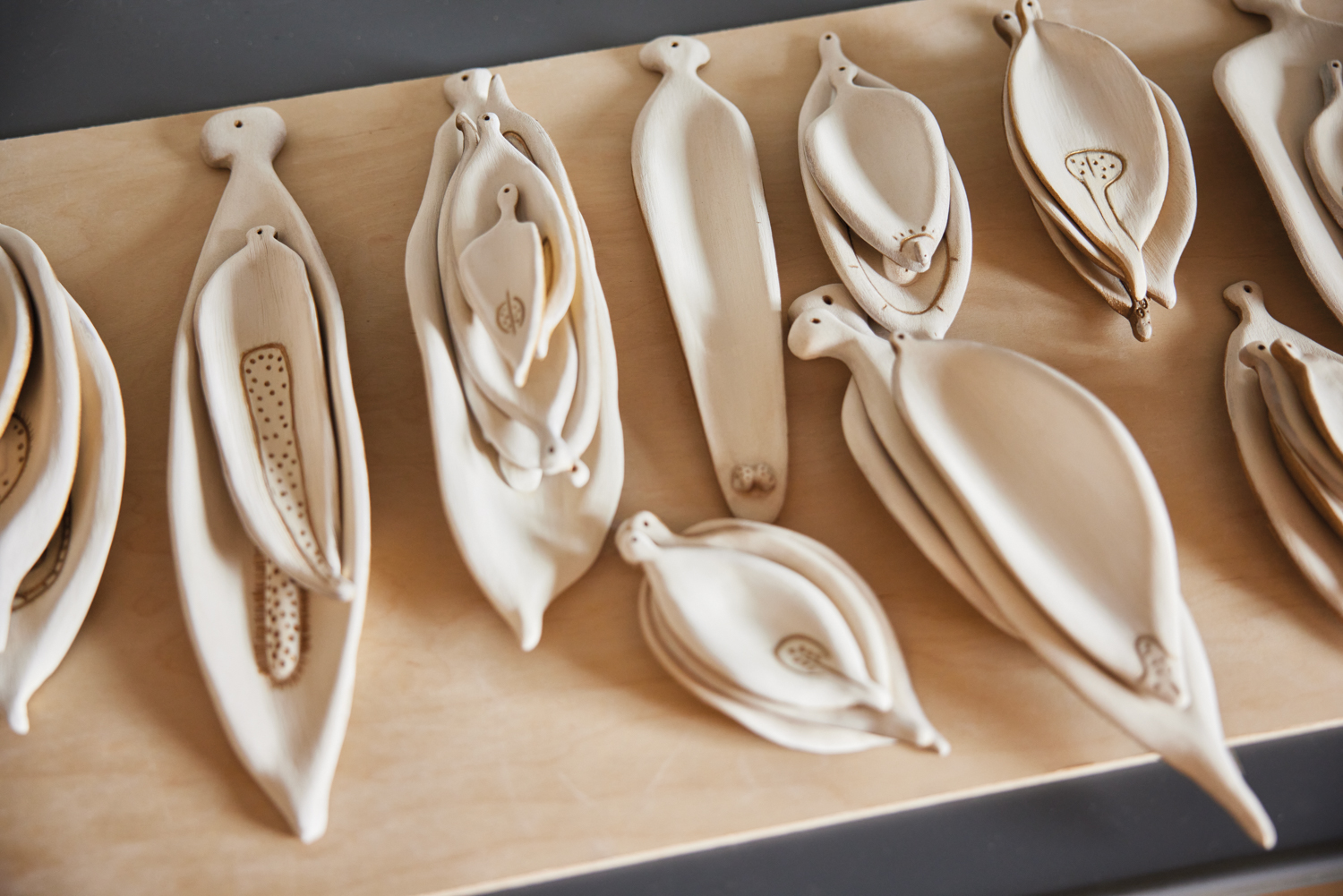
“Direct carving is a very meditative way to create,” says artist Mary Meyer, who trained in stone carving, but now works in a variety of materials including porcelain, clay, cast metal, wood and found objects.
Gaze long enough into nature and you’ll start to see patterns. Gold Canyon, Arizona-based sculptor Mary Meyer got plenty of practice doing just that during her childhood spent on a farm in South Dakota. “I think I was born with an innate connection to nature,” she muses.
As an adult, she channels her lifelong passion for ecology and biodiversity into her art practice. Using stone-carving techniques, she works with different materials—including clay, porcelain, wood, bronze, iron and aluminum—to create biomorphic sculptures that explore the human relationship with nature and how our forms are mirrored in the landscape.
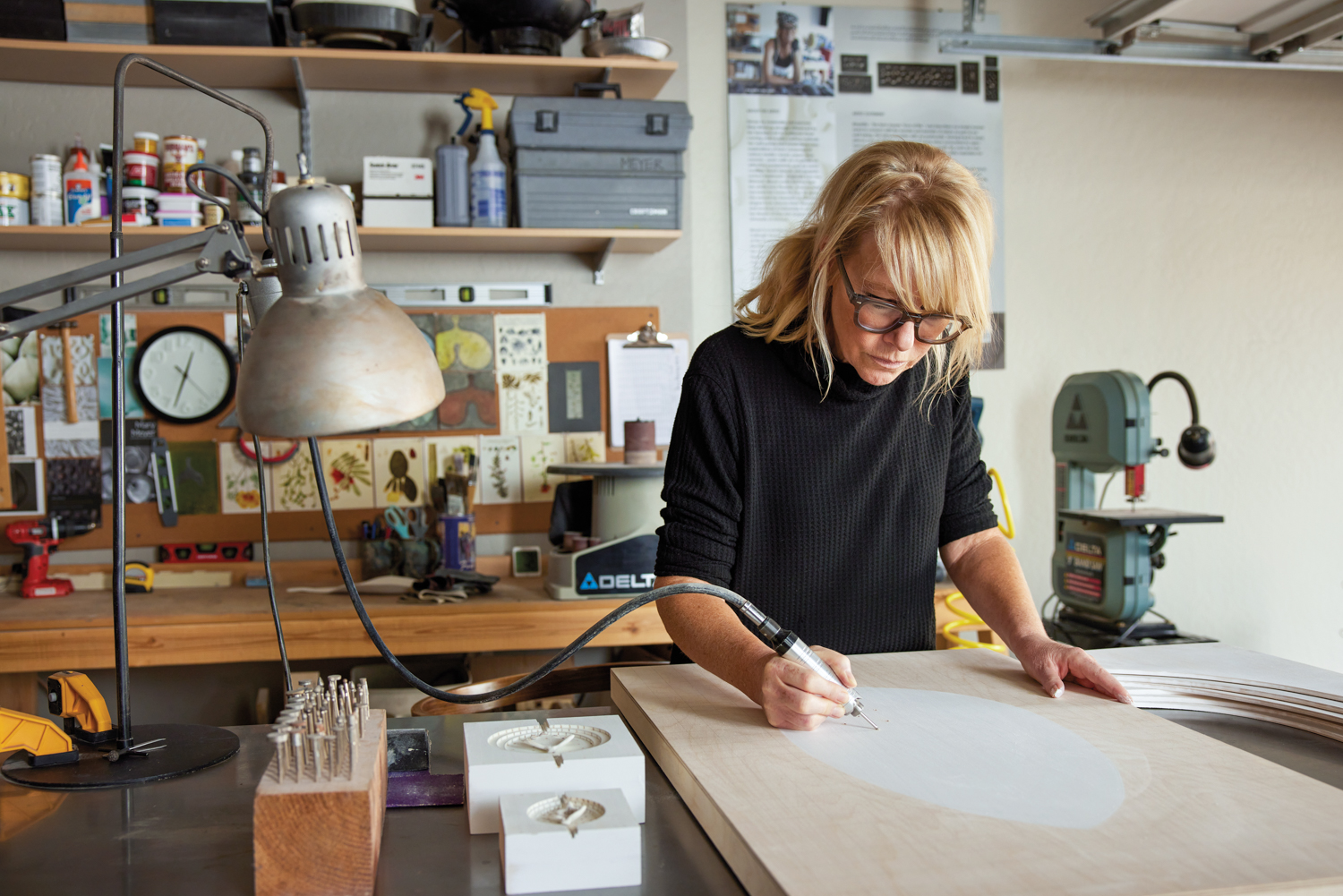
Meyer using an electric flexible shaft tool to carve patterns into a wood panel.

Meyer using an electric flexible shaft tool to carve patterns into a wood panel.

Two of Meyer's works in progress from her "Stillness" series, comprised of carved porcelain leaves on individual wood panels.

Two of Meyer's works in progress from her "Stillness" series, comprised of carved porcelain leaves on individual wood panels.
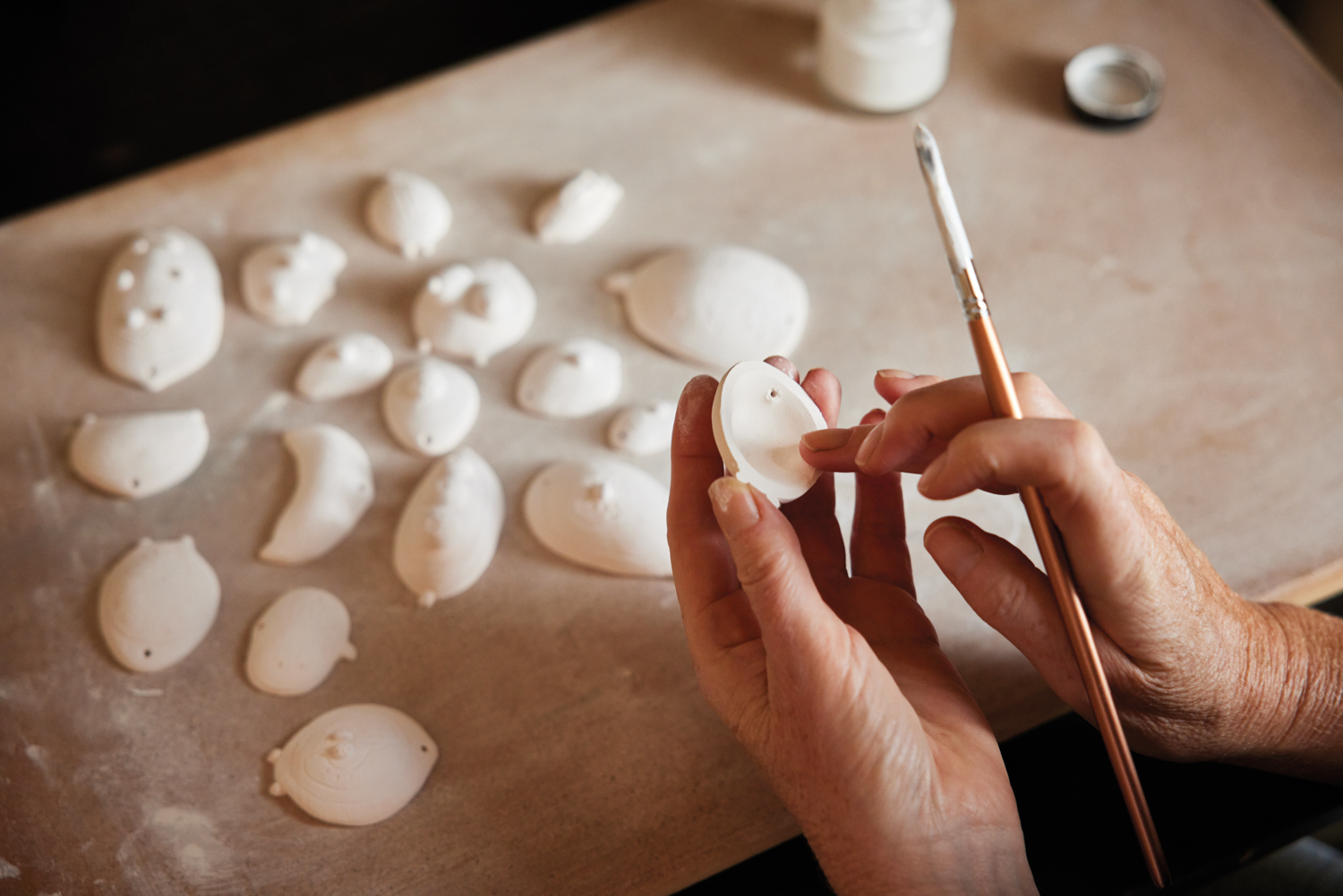
Meyer painting gesso on newly fired porcelain seeds. The seeds are part of a new series inspired by the blooming flora of the Sonoran Desert.

Meyer painting gesso on newly fired porcelain seeds. The seeds are part of a new series inspired by the blooming flora of the Sonoran Desert.
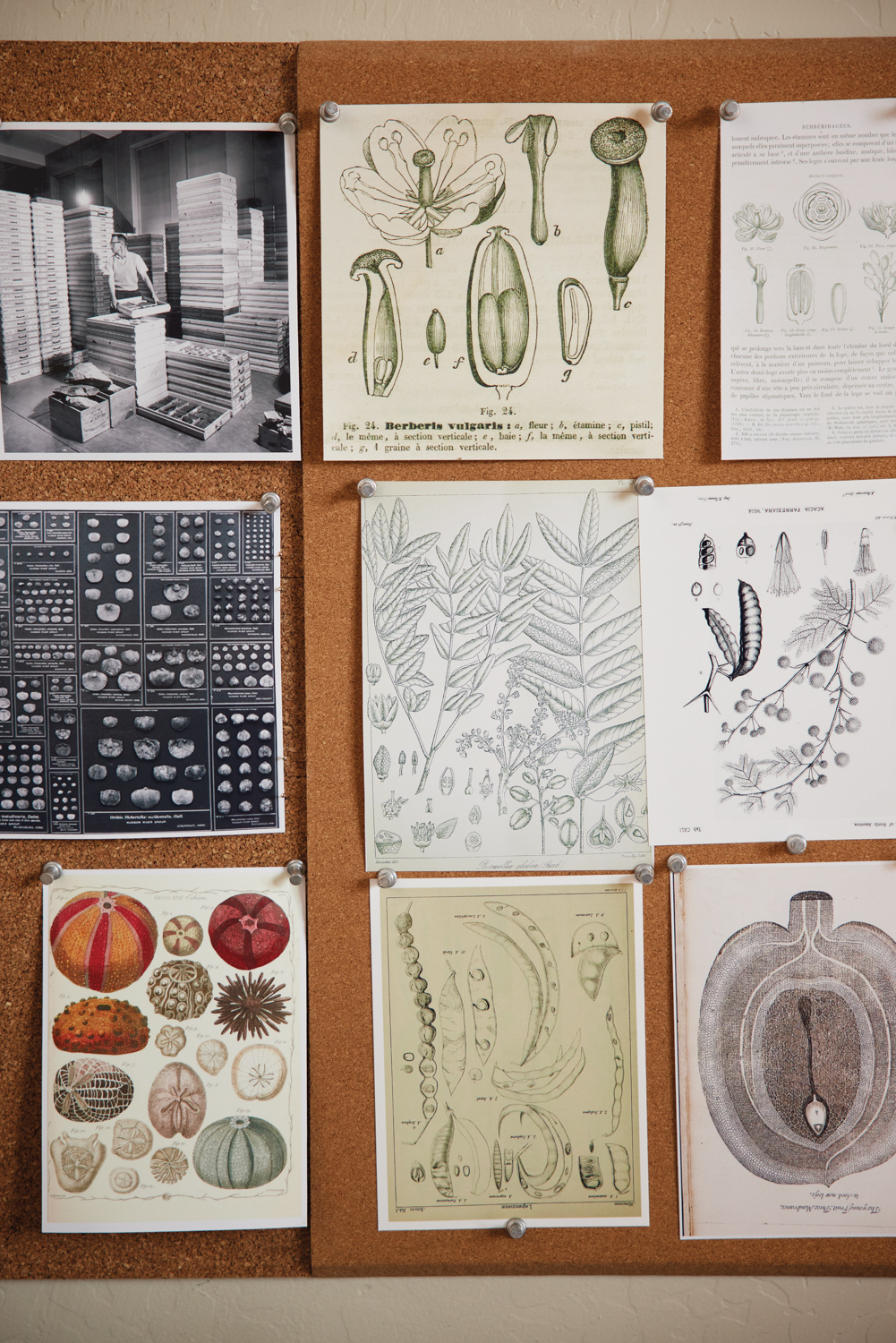
Prints of vintage botanical illustration and photographs of fossils. Much of Meyer's is inspired by the similarities she sees between plant anatomy and human anatomy.

Prints of vintage botanical illustration and photographs of fossils. Much of Meyer's is inspired by the similarities she sees between plant anatomy and human anatomy.
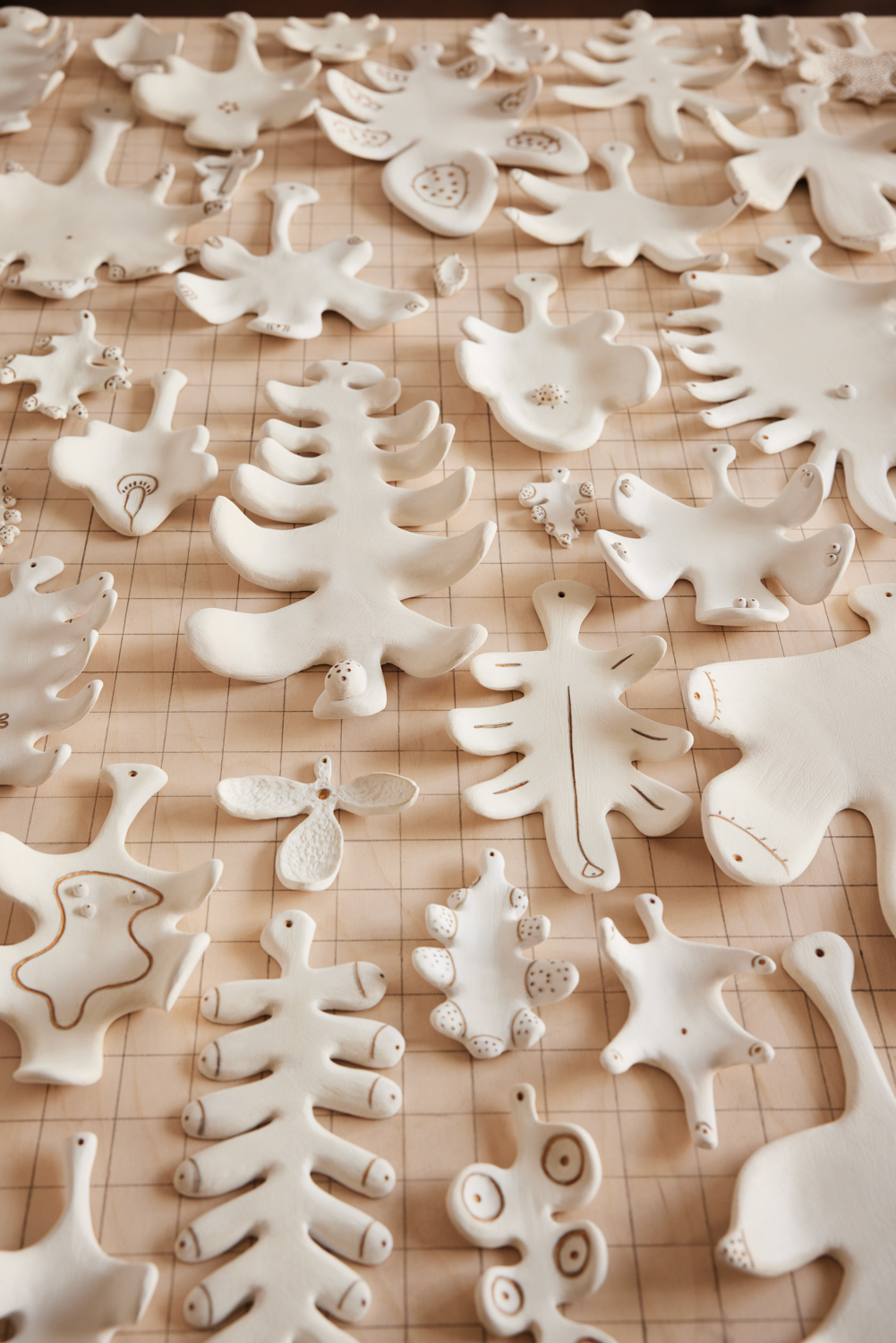
A new work in progress by Meyer in which she arranges porcelain leaves on wood panel.

A new work in progress by Meyer in which she arranges porcelain leaves on wood panel.
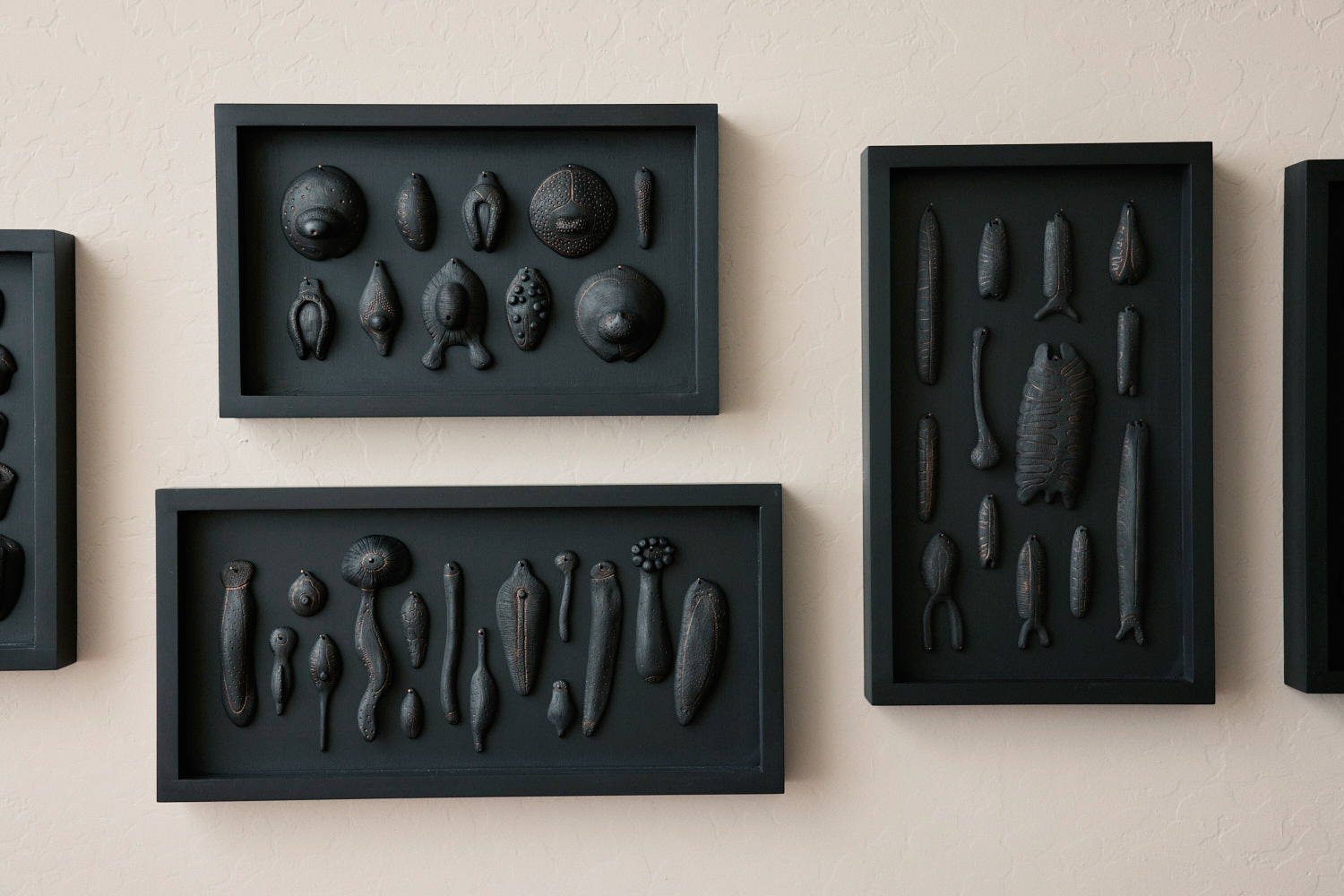
"Connection and stillness, those are very strong undercurrents in my work," says Meyer. Here she used black clay, graphite and clay to create this botanical forms hung on panels with sewing needles.

"Connection and stillness, those are very strong undercurrents in my work," says Meyer. Here she used black clay, graphite and clay to create this botanical forms hung on panels with sewing needles.
Meyer describes her creative process as being much more meditative than calculated. “The first sculpture class I ever took was in stone carving, so I was taught to work very intuitively with the material,” she says. Her most recent works focus mostly on clay, which she became acquainted with when using it to cast metal. “I found that I could work really fast through clay and make smaller pieces, but larger installations,” she says. “It’s a return to that direct carving experience I had in stone, but I work more immediately because of its softness. I like that the mark of the hands, the mark of the tool, is always embedded in clay. And unlike stone, it’s both subtractive and additive.”
She begins each work by creating abstract stencils based upon botanical illustrations. After rolling out the clay, Meyer uses those stencils to cut out the shapes, hand builds the forms, carves the pieces and, finally, bisque fires them in a kiln, prepping them for color. “I use different methods for applying color,” she explains, “such as hand painting the incised areas with earth pigments or rubbing graphite on the surface.” Once finished, the artist hangs the forms on panels using sewing needles and pins. “The metal objects I use are symbols of repetitious activities—that meditative state is very important in my work,” she notes. “Because they’re metal, they’re always present and reflecting the here and now.”
While her work often adheres to a monochromatic palette, Meyer says there is color on the horizon. Her next project—part of a residency at Tempe Center for the Arts—is based on the blooming flora in the desert. “It’s this idea of resilience and using seeds as metaphors for the human condition and what we’ve all been through recently,” she says. “These plants, trees and cacti bloom with little or no water but they have this vibrant color. I recognized that same resilience in people during the past year. I think we all need some color now.”


